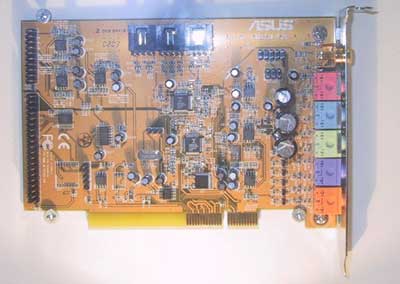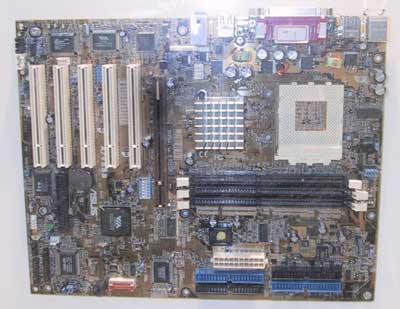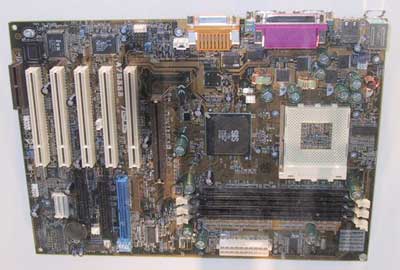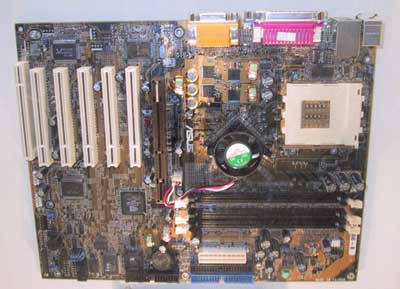CeBIT 2002 Part 2 - CPUs, Cooling, Motherboards, & Video
by Tillmann Steinbrecher on March 20, 2002 1:56 AM EST- Posted in
- Trade Shows
ASUS
This is ASUS' KT333 motherboard. It can read the temperature from
the CPU's internal thermal diode, and halts the CPU in case of overheating.
On the ASUS stand, a video of what happens if you remove the heatsink during
operation was shown. This video was very similar to the video of AMD CPUs burning
up after heatsink removal that was posted on Tom's
Hardware Guide a while ago. But in this case, the CPU survived, and there
was no damage done. It remains to be seen whether independant testers will be
able to reproduce the positive result of this risky experiment - but if this
is the case, then it clearly shows that monitoring the CPU temperature through
the internal diode is far superior to the "measurement below CPU" method.
Another positive thing about this board is that ASUS finally got rid of the
unnecessary fan on the north bridge, and replaced it with a pretty large passive
heatsink.
The A7V333 comes with a 6-channel audio chip from CMedia. This chip has great
SP/DIF features; it is capable of doing perfect digital output at 44.1 and 48kHz.
However, ASUS did not include any optical SP/DIF connectors on the board, like
ABIT does, so this feature will probably remain unused in the most cases.
Just like ABIT, ASUS plans to ship future motherboards with the mounting holes
for heatsinks.
The A7S333 is based on the SIS 745 chipset. Unlike the A7V333, this board cannot read the internal thermal diode of the CPU. It also features 6-channel audio using a CMedia chip.
This is ASUS' nForce motherboard. The north bridge is cooled with
a tiny heatsink with a fan on it - other motherboard manufacturers ship their
nForce boards with a larger passive heatsink. We definitely prefer the passive
cooling solution, for reliability and noise issues. And even overclockers should
prefer a large passive heatsink - they can add a fan to it, and get much more
effective cooling than with this tiny heatsink and fan.
The board has onboard LAN using a Realtek chip. Apart from this, in has all
the typical features of an nForce board. The slot on the left that looks like
a reversed/skewed PCI slot hosts an add-on card that lets you take advantage
of the nForce's features, including SP/DIF out.














1 Comments
View All Comments
Dr AB - Monday, May 11, 2020 - link
MSI & ASUS - Hmm looks like we are looking at the very start of an interesting era. And yes, Cooler Master. ;)